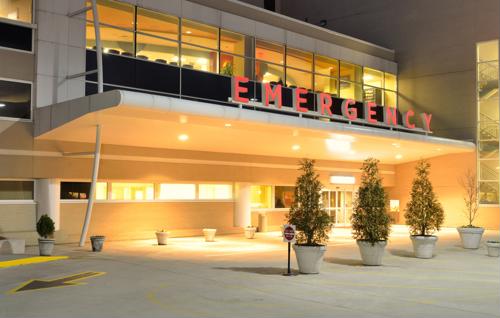When emergency departments (EDs) reach their capacity, it can negatively impact the entire patient experience and quality of care. Telehealth is the key to help EDs manage patient flow and continue to provide the best individualized care even during trying times.
The risks of an overwhelmed healthcare system
Even without the uncertainty of a global healthcare crisis, emergency departments experience an influx of patients on a daily basis. U.S. News and World Report found that of the estimated 27 million annual visits insured patients make to the ED, nearly two-thirds are either avoidable or not an actual emergency.
With patients entering the emergency room with symptoms ranging from headaches to severe chest pain, it can be difficult for nurses and doctors to determine who needs immediate care. Furthermore, Frontiers reported that ED overcrowding is associated with increased mortality and decreased quality of care.
When hospitals become overwhelmed with patients, there are multiple scenarios that can occur. Patients may abandon waiting rooms when they feel wait times are too long resulting in individuals not receiving the immediate care they may need and also disrupts how nurses have queued patients. Additionally, crowded rooms delay care for every patient entering the ED and stretch doctors to their limits which can result in rushed diagnoses.
The American College of Emergency Physicians (ACEP) is adamant that overcrowding emergency departments results in more medical errors, reduced patient satisfaction and actually increases the average lengths of stay which contributes to higher medical costs. Identifying the bottlenecks in emergency care and implementing solutions is the only way to ensure emergency care patients are receiving quality treatment without overextending the healthcare system.
Using telehealth to mitigate emergency department overcrowding
Ensuring that emergency care is provided to patient’s most in need starts with triage. This critical step to determine the severity of a patient’s condition to continue with a care plan helps weed out critical patients from those who may not need emergency services. ACEP described how with telehealth solutions in place, non-emergency staff can work in tele-triageas patients arrive to free up emergency physicians to care for those in critical condition.
Urgent care facilities have already proven how telemedicine can help stagger the flow of patients to a manageable rate. When patients experience a non-life threatening medical episode or accident, or need diagnostic testing that cannot wait another day (like a broken finger or fever), they can visit an urgent care center for treatment.
Urgent care centers have adopted telehealth platforms to help manage patient care through virtual visits, urgent care doctors can diagnose minor illnesses, injuries and answer medical questions before recommending how the patient should move forward with their care plan. Aided by audio and video, physicians can assess a patient’s condition from a distance, schedule an appointment with a specialist or recommend the patient receive immediate care at an emergency department.
The same is true for hospitals. Healthcare IT News reported that when hospitals offered telehealth services to patients, they found that the majority of patients who used their services would have gone to an urgent care facility and a further few would have gone to an emergency room if virtual consulting wasn’t available. This is a crucial step for healthcare systems to mitigate ED and urgent care overcrowding and improve quality of patient care.
Prioritizing public health with telemedicine
When patients are able to talk with a licensed physician from a distance and get their medical questions answered, it’s the benefit of the public health system. This is especially true when a novel virus or even the common flu is the cause of the patient overload.
Infected patients can receive treatment virtually and avoid coming in contact with others while a physician monitors their condition remotely without risking their own health. Additionally, patients who need emergency services for health issues like heart attacks or strokes can receive immediate care at these facilities without running into an infected patient. Telehealth allows urgent care doctors to provide quality care from a distance which helps reduce overcrowding in an effort to preserve public health.
AMD Global Telemedicine delivers quality and customizable telehealth solutions that can help you deploy virtual care capabilities quickly. Learn more about partnering with AMD Global Telemedicine by reaching out to us today.





